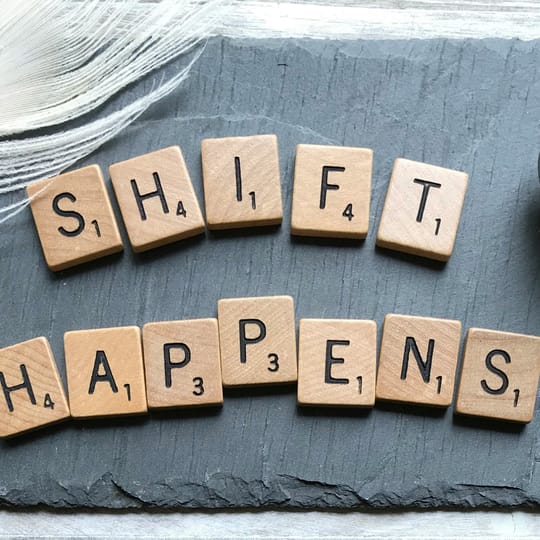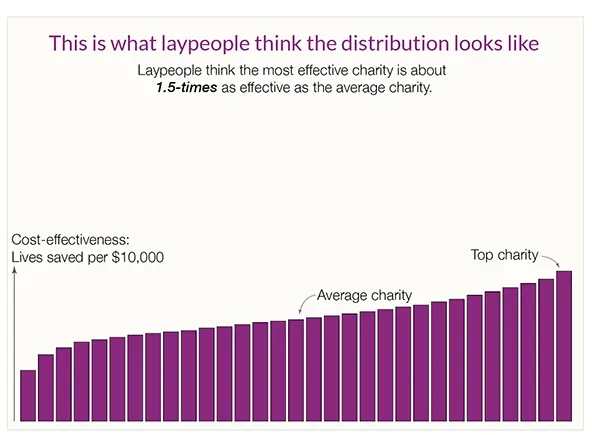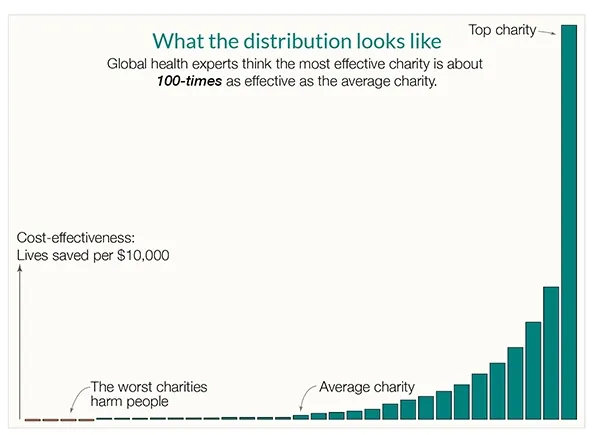
The Impact Mindset
We live in a time when hundreds of thousands of organizations are focused on solving social problems in our own communities and around the globe. Though many people only see a broken world, we see optimism in the eyes and hearts of the funders, employees, and volunteers of these organizations. More importantly, we see optimism in the eyes of their clients.
Charities Enjoy High Trust
According to a 2025 poll by Independent Sector, 57% of Americans have high trust in nonprofit organizations. This is the highest level of trust among a group consisting of small businesses, private foundations, corporate philanthropy, high net worth individuals, local government, state government, big business/corporations, the news media, and the federal government (Trust in Nonprofits and Philanthropy).
This level of trust corresponds to a 2020 study (Caviola et al) showing perceptions of the cost-effectiveness for organizations involved in solving health problems. (Caviola et al, Donors vastly underestimate differences in charities’ effectiveness)


In discussing this study, Kevin Starr, Mulago Foundation CEO, mentions that “A couple of years ago, some clever researchers decided to investigate what they called 'the puzzle of ineffective giving.’ First, they asked a bunch of potential donors how much they thought the difference might be between the average charity and the most effective charity (see previous chart). Then they asked a bunch of experts. There are two big things to notice here. The first is that while most potential donors don’t think there’s that much difference in effectiveness between charities, the experts polled think there’s a huge difference.” (Starr, Don't Feed The Zombies)
As part of that expert group, we experience the second chart daily. We attest that the average charity doesn’t do much good; the below-average ones are hurting people, and the best are 10x-100x better.
The Problem? The Charitable Mindset
All of us, including the two of us, were raised with a charitable mindset. Our grandparents had it, our parents had it, and we received it. Our neighbors and friends have it. It perpetuates in our society.
It brings with it a few key perspectives:
- Stories Successful anecdotal stories drive our interest. We never hear any negative anecdotal stories.
- Emotions These stories pull our emotional heart-strings.
- It Must Be Good It's a charity, it's helping people, I don't need any more evidence.
- Feel Good We feel good by participating--something that researchers call 'the warm glow.'
- Broken Marketplace Unbeknown to us, we are participating and helping to prolong a broken marketplace where funder grants and impact investments flow to poor, average, and exceptional social impact organizations.
The Impact Mindset = Fierce Philanthropy
The impact mindset is hidden to most of us. It exists, but few of us grew up with it. It has a different set of perspectives:
- Stories + Outcomes Stories are helpful in getting a sense of what the social impact organization is trying to change in people's lives but we only see what is happening when we understand changes in peoples lives as outcome measurements that tell us how many lives have improved, how many stayed the same, and how many are worse off. We know this because there is no intervention that has a 100% success rate.
- Emotions + Intellect When we combine the emotional pull with our intellectual understanding we have will find greater success in our granting and impact investing.
- It Might Be Good Since we know that a percent of people are helped by an intervention, another percent are not changed, and another percent are worse off then we approach each social impact organization with an appropriate level of uncertainty. The best organizations continually understand the social problem better, create better interventions, and increase the number of people's lives that improve while reducing the number of people not helped at all or that are worse off.
- Change The World The best organizations actually change the world and we can feel great about our philanthropy.
- Creating Marketplaces Granting and investing in the best social impact organizations enhances the charitable marketplace by shifting funds away from poor and average organizations. This enhances the giving and impact investing marketplace.


